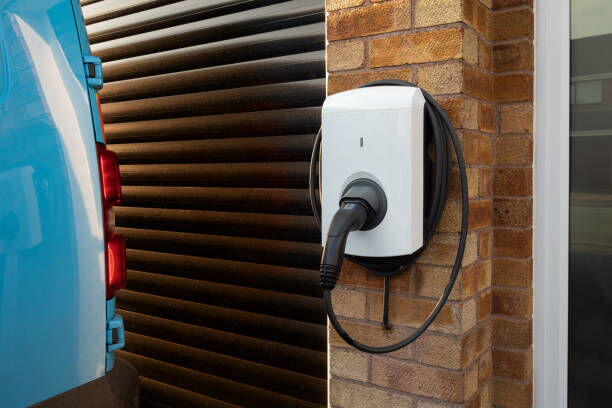As electric vehicles (EVs) continue to gain popularity, the infrastructure supporting them, such as EV chargers and charging cables, has become increasingly vulnerable to theft and damage. Thieves are targeting EV charging cables, often selling the copper content for scrap or listing the cables on second-hand marketplaces like eBay and Facebook Marketplace. This growing issue has left many EV owners searching for effective ways to safeguard their charging equipment.
While most electric car manufacturers have implemented locking mechanisms to secure charging cables during unattended charging sessions, these systems are not always foolproof. As a result, EV drivers are exploring additional measures to protect their chargers and cables from theft and damage. This article delves into practical strategies to secure your EV charging equipment, ensuring peace of mind and uninterrupted charging experiences.

How to protect your EV charger and cable from theft, here are the key strategies to protect your charging equipment:
One of the most effective ways to protect your EV charger is by installing a secure lock specifically designed for EV charging stations. These locks are often built into the charger itself, preventing unauthorized removal of the cable. Some advanced models even come with keyless entry systems or smartphone-controlled locking mechanisms, adding an extra layer of security.
Cable locks are a simple yet effective solution to deter thieves. These locks can be wrapped around the charging cable and secured to a fixed object, such as a pole or the EV charger itself. Many cable locks are made from durable materials like hardened steel, making them resistant to cutting or tampering.
Installing a charging station enclosure can provide comprehensive protection for your EV charger and cable. These enclosures are typically made from robust materials like metal or heavy-duty plastic and are designed to house the entire charging unit. Some enclosures also feature locking mechanisms to prevent unauthorized access.
For a more budget-friendly option, a regular padlock can be used to secure your charging cable. Simply loop the cable through a fixed object and lock it in place. While not as sophisticated as other solutions, a padlock can still serve as a deterrent to opportunistic thieves.
Whenever possible, avoid leaving your car unattended while it’s charging. Thieves are less likely to target a charging cable if the vehicle’s owner is nearby. If you must leave your car, try to park in a well-lit, high-traffic area where potential thieves are less likely to act.
Marking your charging cable or charger with a unique identifier, such as your initials or a serial number, can make it less appealing to thieves. Additionally, marked equipment is easier to identify and recover if it is stolen. Consider using UV markers or engraving tools for permanent marking.
Parking your car in a location that is not easily visible from the street can reduce the risk of theft. Thieves are more likely to target charging cables that are in plain sight. If you have a garage or private driveway, use it for charging whenever possible.
Smart socketed chargers are equipped with advanced features, including built-in cable-locking systems. These chargers often come with smartphone apps that allow you to monitor and control the charging process remotely. Some models even send alerts if the cable is tampered with, providing an added layer of security.
While theft is a significant concern, EV chargers and cables are also susceptible to damage from environmental factors, vandalism, and improper use. Here are some tips to protect your charging equipment from damage:
Invest in a high-quality charging cable designed to withstand wear and tear. Look for cables with reinforced connectors and weather-resistant coatings to ensure longevity.
If your EV charger is installed outdoors, make sure it is housed in a weatherproof enclosure. This will protect the charger from rain, snow, and extreme temperatures, which can cause damage over time.
Perform routine checks on your charger and cable to identify any signs of damage, such as frayed wires or cracked connectors. Addressing issues early can prevent more significant problems down the line.
Ensure that your EV charger is compatible with your vehicle’s power requirements. Overloading the charger can lead to overheating and potential damage. Always follow the manufacturer’s guidelines for safe use.
Unfortunately, EV chargers are sometimes targeted by vandals. Installing your charger in a secure location, such as a locked garage or a monitored parking area, can help reduce the risk of vandalism. Additionally, consider using a charger with a tamper-proof design.
Power surges can damage your EV charger and other electronic equipment. Installing a surge protector can help safeguard your charger from voltage spikes and electrical faults.
Dirt, debris, and moisture can accumulate around your charging equipment, potentially causing damage. Regularly clean the area around your charger and cable to maintain optimal conditions.
When not in use, store your charging cable in a safe and dry location. Avoid leaving the cable exposed to the elements or coiled tightly, as this can lead to wear and tear.
As the adoption of electric vehicles continues to rise, so does the need to protect the associated charging infrastructure. EV chargers and cables are valuable assets that require safeguarding from theft and damage. By implementing the strategies outlined in this article—such as installing secure locks, using enclosures, and investing in durable equipment—you can significantly reduce the risk of losing or damaging your charging gear.
Moreover, staying vigilant and proactive in maintaining your charging equipment will ensure its longevity and reliability. Whether you’re charging at home or on the go, taking these precautions will provide peace of mind and help you enjoy the benefits of electric vehicle ownership without unnecessary hassles.
By prioritizing the security and care of your EV charger and cable, you contribute to the broader effort of promoting sustainable transportation while protecting your investment. As technology continues to evolve, we can expect even more innovative solutions to emerge, further enhancing the safety and convenience of EV charging. Until then, adopting these practical measures is a step in the right direction.
